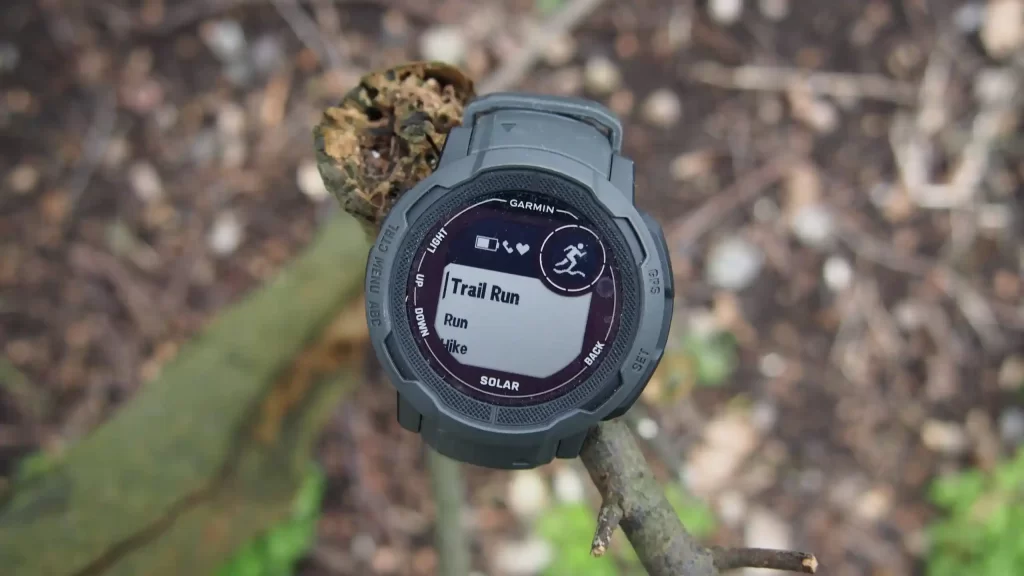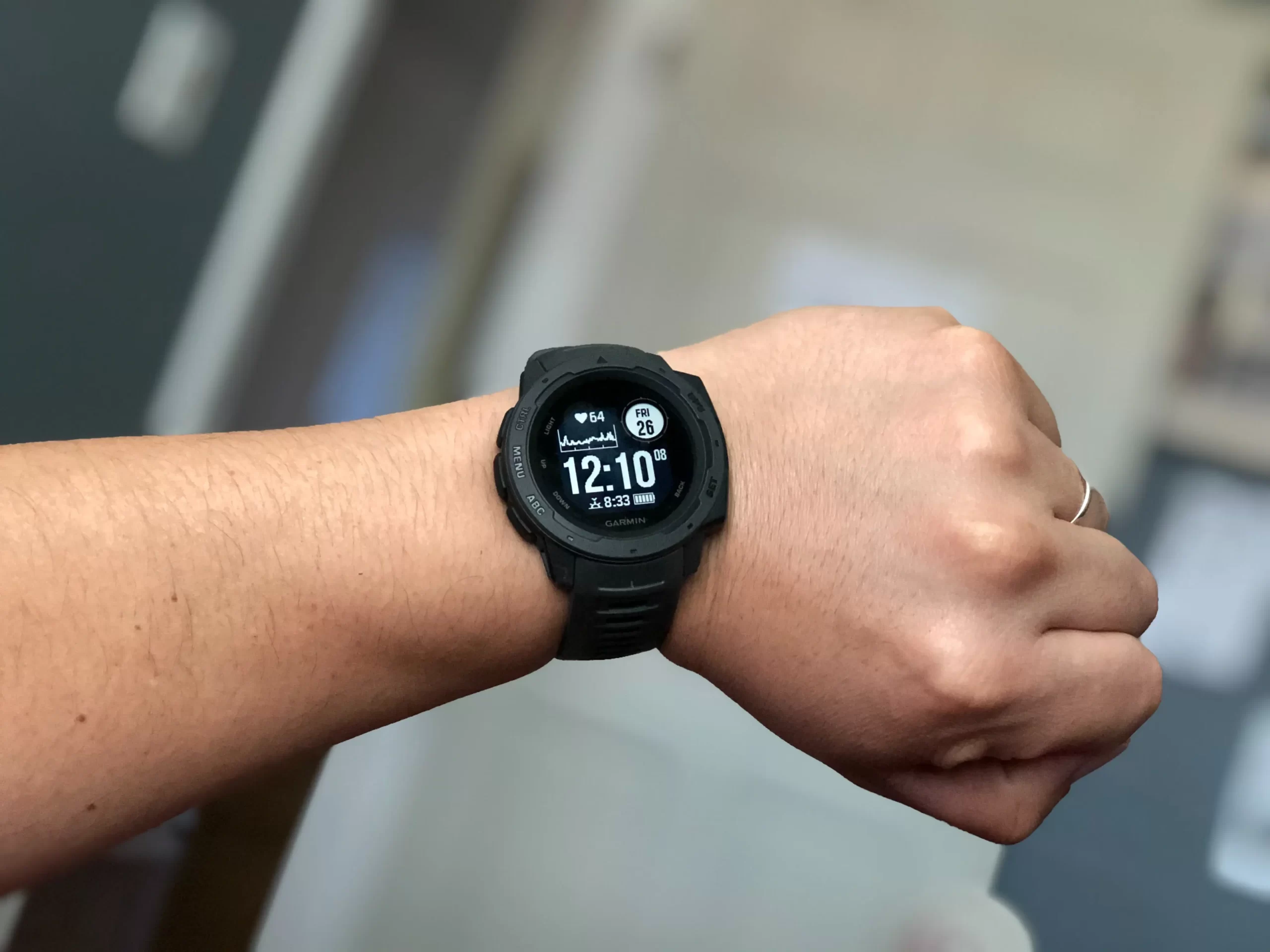GPS Mode vs UltraTrac: A Guide to Maximising Your Garmin Watch Battery
What is Ultratrac Mode? How Do You Use it?
For runners and adventurers relying on Garmin GPS watches for tracking activities, one critical limitation becomes battery life. But Garmin’s UltraTrac mode provides a strategic way to extend runtime by reducing how often your watch pings satellites for a location fix.
Our guide will examine how standard GPS mode and UltraTrac differ, when to leverage each, tips for enhancing UltraTrac accuracy, and how to configure these settings. Let’s illuminate how to get the most from your Garmin’s battery when out on long excursions!
| Feature/Aspect | GPS Mode (High Accuracy) | UltraTrac Mode |
| Primary Objective | High accuracy and detail in tracking | Battery conservation for long activities |
| Satellite Networks | Uses GPS, GLONASS, and other global navigation systems | Uses GPS |
| Recording Interval | Multiple times per second (default 1-second, can be toggled to 2 seconds) | Once per minute |
| Battery Life | Standard (10-20 hours max depending on the model) | Extended (can last for days) |
| Data Accuracy | High (distance, pace, elevation gain, route, real-time metrics) | Reduced (estimates rather than real-time data) |
| Activity Track Appearance | Smooth and closely traces your route | Jagged and abbreviated |
| Ideal For | Activities where high data accuracy is needed (e.g., competitive sports, hiking) | Long activities where recharging isn’t feasible and high accuracy is not a priority (e.g., trekking) |
How Does GPS Mode Work on Garmin Watches?
The normal default tracking setting found on Garmin watches is referred to simply as GPS mode or High Accuracy mode. This mode uses a combination of GPS, GLONASS, and other global navigation satellite systems to pinpoint your precise geographic coordinates throughout an activity.
By using multiple satellite networks simultaneously, GPS mode triangulates your location fix with greater speed and accuracy compared to single system receivers. For most conditions, this provides the gold standard for reliably recording distance, pace, elevation gain, route taken, and all other real-time activity metrics.

Depending on your exact Garmin watch model and settings, GPS mode typically captures your position multiple times per second. For example, the latest Forerunner and Fenix models default to 1-second recording intervals but can be toggled up to every 2 seconds for marginal battery savings.
This rapid polling of your coordinates allows GPS mode to plot your activity track closely in real time. The bottom line – if you need accurate data on your route, speed, and performance metrics during an activity, GPS mode is ideal. Next let’s contrast how UltraTrac differs.
What is Garmin UltraTrac Mode and How Does It Work?
While GPS mode emphasises maximum detail, Garmin designed UltraTrac mode specifically to conserve battery life during extra long activities where recharging isn’t feasible.
As Garmin explains, “UltraTrac is a GPS mode that decreases the recording rate of GPS data to once per minute, providing much longer battery life while in GPS mode.”
So rather than constant second-by-second polling of your coordinates, UltraTrac pings satellites only once every 60 seconds to capture your location. This vastly reduces power consumption, but means your watch relies more on inertial sensors and motion analysis between GPS points to estimate your activity path and other metrics.

The upshot is drastically extended battery runtimes – your watch can operate for days without recharging in UltraTrac mode when a normal GPS activity may last just 10-20 hours max.
But the compromise is significantly reduced recording accuracy. Your activity tracks will appear jagged and abbreviated since your watch is connecting single location dots versus closely tracing your route. Pace, distance and ascent/descent measurements also become estimates rather than real-time truth.
So in summary, UltraTrac trades battery life for precision. Next let’s explore ideal use cases where favouring longevity over accuracy proves beneficial.
When Should You Use UltraTrac Mode vs GPS Mode?
Choosing the right recording setting boils down to your goals and priorities for a given activity:
Best Uses for Standard GPS Mode
GPS mode shines whenever precision matters most:
- Races or time trials where every metre and second count
- Running routes where you need to accurately measure mile splits
- Activities under 8-10 hours where battery life isn’t a concern
- Training where you’ll analyse post-activity pace, form, HR etc in depth
- Situations where real-time tracking and stats help motivation
- Areas with strong satellite coverage and minimal obstructions
Best Uses for UltraTrac Mode
Conversely, UltraTrac becomes the ideal pick when:
- Accuracy matters less than extended battery runtime
- You need GPS tracking beyond 10-15 hours without charging
- Recording general data trends is more important than route details
- The environment has limited satellite reception (canyons, forests)
- You aren’t fixated on precise pace and distance measurements
- Battery conservation takes priority over real-time performance stats
- You want a backup option if your watch dies mid-activity
Evaluate your goals, then leverage the mode best matched. Now let’s cover some strategies to help UltraTrac recordings align more closely to your actual metrics.
Tips for Improving UltraTrac Accuracy
While UltraTrac has its limitations, a bit of planning still allows grabbing usable distance and performance data:
Hike or Run at a Slower Pace
When moving briskly, you’ll cover more ground between minute-long GPS points causing greater discrepancies. But at slower paces, your position shifts less between satellite pings leading to better data alignment.
Pause the Activity When Stopping
Since UltraTrac continues passively recording even when stopped, taking breaks can throw off readings. Manually pausing your activity whenever you halt avoids skewing the numbers.
Seek Open Sky Views
Position your watch arm towards unobstructed sky views to facilitate quick satellite locks when grabbing your next waypoint. Building obstructions and tree cover make clean reads harder.
Pair with a Foot Pod Sensor
For hikers and trail runners, adding a foot pod sensor provides useful supplemental pace and distance data between GPS points. The combo improves overall recording accuracy.
Applying these tips allows UltraTrac mode to capture just enough realistic detail when battery endurance matters above pinpoint precision.
How to Change Between GPS and UltraTrac on a Garmin Watch
Toggling between standard GPS and UltraTrac recording modes only takes a few moments:
- Press UP/MENU and select Settings
- Choose Activities & Apps
- Pick your desired activity like Run, Hike, UltraRun etc.
- Open the activity’s settings
- Select GPS or Satellites
- Choose UltraTrac to enable, GPS to revert back
Once configured, your watch will automatically leverage your preferred satellite tracking mode for that activity profile going forward. Easy!
Now let’s connect the dots on when to harness the power of each setting.
When to Use GPS vs UltraTrac for Your Activity Goals
Choosing the right mode hinges largely on your goal priorities:
Pick GPS Mode When:
- You need accurate real-time pace, distance and route measurements
- Tracking your performance progression matters
- You’ll analyse your stats in depth post-activity
- You have 8+ hours of expected battery life
- Clear satellite connections are available
- A foot pod isn’t an option for supplemental data
Pick UltraTrac Mode When:
- You need to extend battery life for a very long event
- Recording an approximate activity track is sufficient
- You’re recording more for personal memories vs performance
- Satellite connections are spotty and unreliable
- You can pair the watch with a foot pod sensor
- Checking your real-time running pace isn’t critical
Evaluate the pros and cons, then leverage the mode best aligned to your goals and conditions.
Putting It All Together
Garmin engineered GPS and UltraTrac modes to balance key user needs under different scenarios:
- GPS delivers maximum precision for analysing performance when satellite connections are reliable.
- UltraTrac prioritises battery longevity for ultra distances where precision matters less.
Choose what matters most activity by activity. For a trail 50 miler, maybe you need every last minute of battery life. But for a fast-paced marathon, each mile split might be vital.
Let your goals and context guide mode choices to maximise your Garmin experience on every adventure you undertake. Dialling in settings tailored to your needs makes these watches shine even brighter.
So explore both modes, embrace their unique strengths and limitations, and discover how to extract the most value based on your specific aims. Soon you’ll unlock the right mode at just the right moments to fulfil every activity goal you’ve got.
Want a new watch with ultratrac mode? Check out this review of the Garmin 965. For more info on GPS watches, running, ultramarathons and more, head over to our blog.
FAQ
Garmin UltraTrac is better for battery conservation, while GPS + GLONASS offers higher accuracy.
UltraTrac mode offers reduced accuracy compared to standard GPS mode, as it relies more on inertial sensors and motion analysis.
UltraTrac is a battery-saving mode that uses GPS, while GLONASS is a separate satellite system that can be used in conjunction with GPS for higher accuracy.
GPS is best for high accuracy, GLONASS and Galileo offer additional precision, and UltraTrac is ideal for long activities where battery life is a priority.

